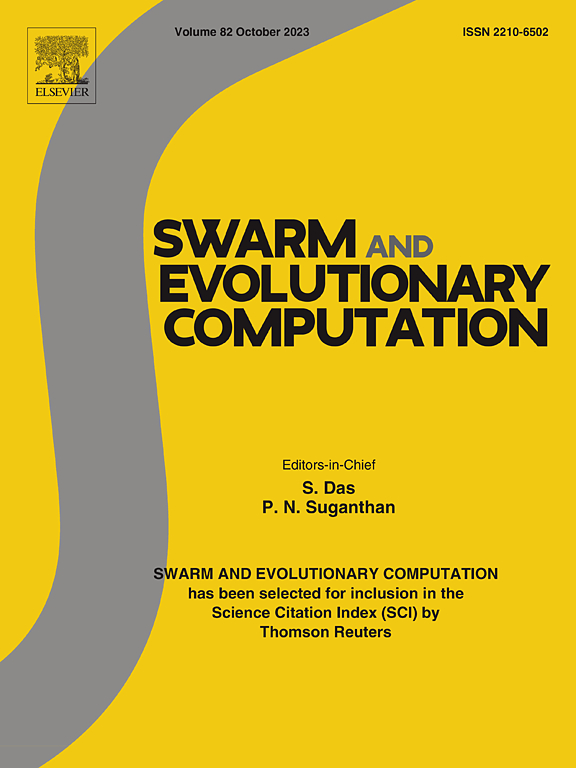Optimal placement of phasor measurement unit for implementation of WAMS in a grid system
IF 8.5
1区 计算机科学
Q1 COMPUTER SCIENCE, ARTIFICIAL INTELLIGENCE
引用次数: 0
Abstract
The effective operation of power systems relies on real-time monitoring and control to ensure stability and reliability through rapid fault detection and service restoration. The supervisory control and data acquisition system-based monitoring play a significant role in grid supervision, but it lacks the time-synchronized phasor measurements needed for dynamic grid analysis. In this context, phasor measurement units (PMUs) play a vital role, providing high-resolution, synchronized data for more accurate and effective grid monitoring. However, the bulk volume of PMU data leads to traffic in data transmission that causes a delay in data reception at the control center. This, in turn, affects the effectiveness of the protection system. In this regard, a data traffic model is introduced in a wide-area monitoring system (WAMS) to estimate the data traffic index (DTI), reducing the number of PMUs installed to minimize system cost. This paper proposes the application of the teaching learning-based optimization (TLBO) algorithm for solving optimal PMU placement (OPP) problems that considers the WAMS DTI and installation cost index. In addition, the zero injection bus case is considered to reduce the number of PMUs further, thereby reducing installation costs. The TLBO algorithm is tested on the Indian utility grid 62-bus system, 49-bus system, 83-bus system in Tamil Nadu, and 31-bus system in Kerala state. The simulation results demonstrate the efficacy of the algorithm in solving OPP problems.
在电网系统中实现WAMS的相量测量单元的优化布置
电力系统的有效运行依赖于实时监测和控制,通过快速发现故障和恢复业务来保证电力系统的稳定和可靠性。基于监控和数据采集系统的监控在电网监控中发挥着重要作用,但缺乏动态电网分析所需的时间同步相量测量。在这种情况下,相量测量单元(pmu)发挥着至关重要的作用,为更准确有效的电网监测提供高分辨率、同步的数据。但由于PMU数据量过大,导致数据传输流量过大,导致控制中心接收数据延迟。这反过来又影响了保护系统的有效性。为此,在广域监控系统(WAMS)中引入数据流量模型来估计数据流量指数(DTI),减少pmu的安装数量,使系统成本最小化。本文将基于教学的优化算法(TLBO)应用于求解考虑WAMS DTI和安装成本指标的PMU最优放置问题。此外,零注入母线的情况下,考虑进一步减少pmu的数量,从而降低安装成本。TLBO算法在印度公用电网62总线系统、泰米尔纳德邦49总线系统、83总线系统和喀拉拉邦31总线系统上进行了测试。仿真结果证明了该算法在求解OPP问题中的有效性。
本文章由计算机程序翻译,如有差异,请以英文原文为准。
求助全文
约1分钟内获得全文
求助全文
来源期刊

Swarm and Evolutionary Computation
COMPUTER SCIENCE, ARTIFICIAL INTELLIGENCEC-COMPUTER SCIENCE, THEORY & METHODS
CiteScore
16.00
自引率
12.00%
发文量
169
期刊介绍:
Swarm and Evolutionary Computation is a pioneering peer-reviewed journal focused on the latest research and advancements in nature-inspired intelligent computation using swarm and evolutionary algorithms. It covers theoretical, experimental, and practical aspects of these paradigms and their hybrids, promoting interdisciplinary research. The journal prioritizes the publication of high-quality, original articles that push the boundaries of evolutionary computation and swarm intelligence. Additionally, it welcomes survey papers on current topics and novel applications. Topics of interest include but are not limited to: Genetic Algorithms, and Genetic Programming, Evolution Strategies, and Evolutionary Programming, Differential Evolution, Artificial Immune Systems, Particle Swarms, Ant Colony, Bacterial Foraging, Artificial Bees, Fireflies Algorithm, Harmony Search, Artificial Life, Digital Organisms, Estimation of Distribution Algorithms, Stochastic Diffusion Search, Quantum Computing, Nano Computing, Membrane Computing, Human-centric Computing, Hybridization of Algorithms, Memetic Computing, Autonomic Computing, Self-organizing systems, Combinatorial, Discrete, Binary, Constrained, Multi-objective, Multi-modal, Dynamic, and Large-scale Optimization.
 求助内容:
求助内容: 应助结果提醒方式:
应助结果提醒方式:


